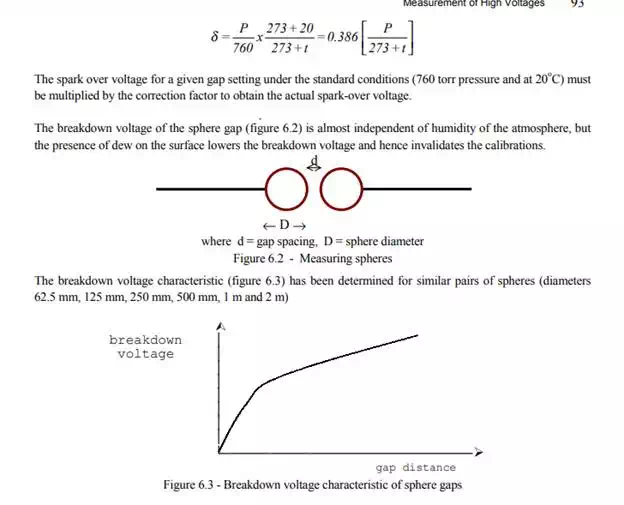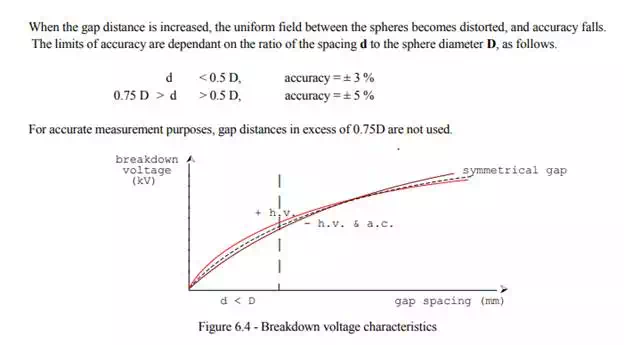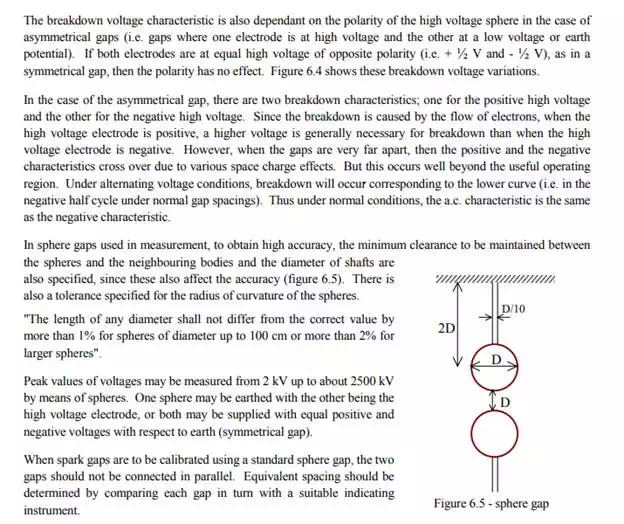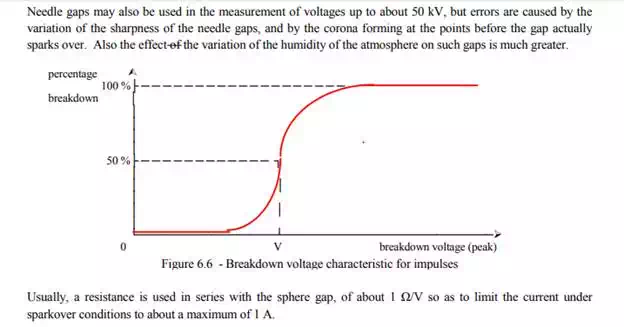Measurement of High Voltage

Direct measurement of high voltage:
Electristatic voltmeters

Abraham voltmeter:

Sphere gap:





However for impulse measurements, a series resistance must not be used since this causes a large drop across the resistance. In measuring impulse voltages, since the breakdown does not occur at exactly the same value of voltage each time, what is generally specified is the 50 % breakdown value. A number of impulses of the same value is applied and a record is kept of the number of times breakdown occurs, and a histogram is plotted with the peak value of the impulse voltage and the percentage of breakdown
Transformer and potential divider methods of measurement
Transformer ratio method
The use of the primary voltage to estimate the secondary voltage is a fairly rough method of measurement, but is satisfactory enough for most ac tests. In this method (figure 6.7), the voltage on the low voltage side of the high-tension transformer is measured. The actual voltage across the load is not measured.

Since the current taken by the device under test is usually very small, currents such as due to corona may cause considerable error in the measured voltage. This method measures the rms voltage. In order to determine the peak value it is necessary to determine the wave form of the secondary voltage.

with additional potential winding
Some high voltage transformers (figure 6.8) carry a separate voltmeter-coil having a number of turns which is a definite fraction of the secondary turns. This method cannot be used with the cascade arrangement of the transformers.

with potential transformer
It may also be possible to have a potential transformer connected across the test device and the voltage measured, however this is an expensive arrangement. Even this method may not be very satisfactory under very high voltage conditions and the series resistance method of measurement may be used.